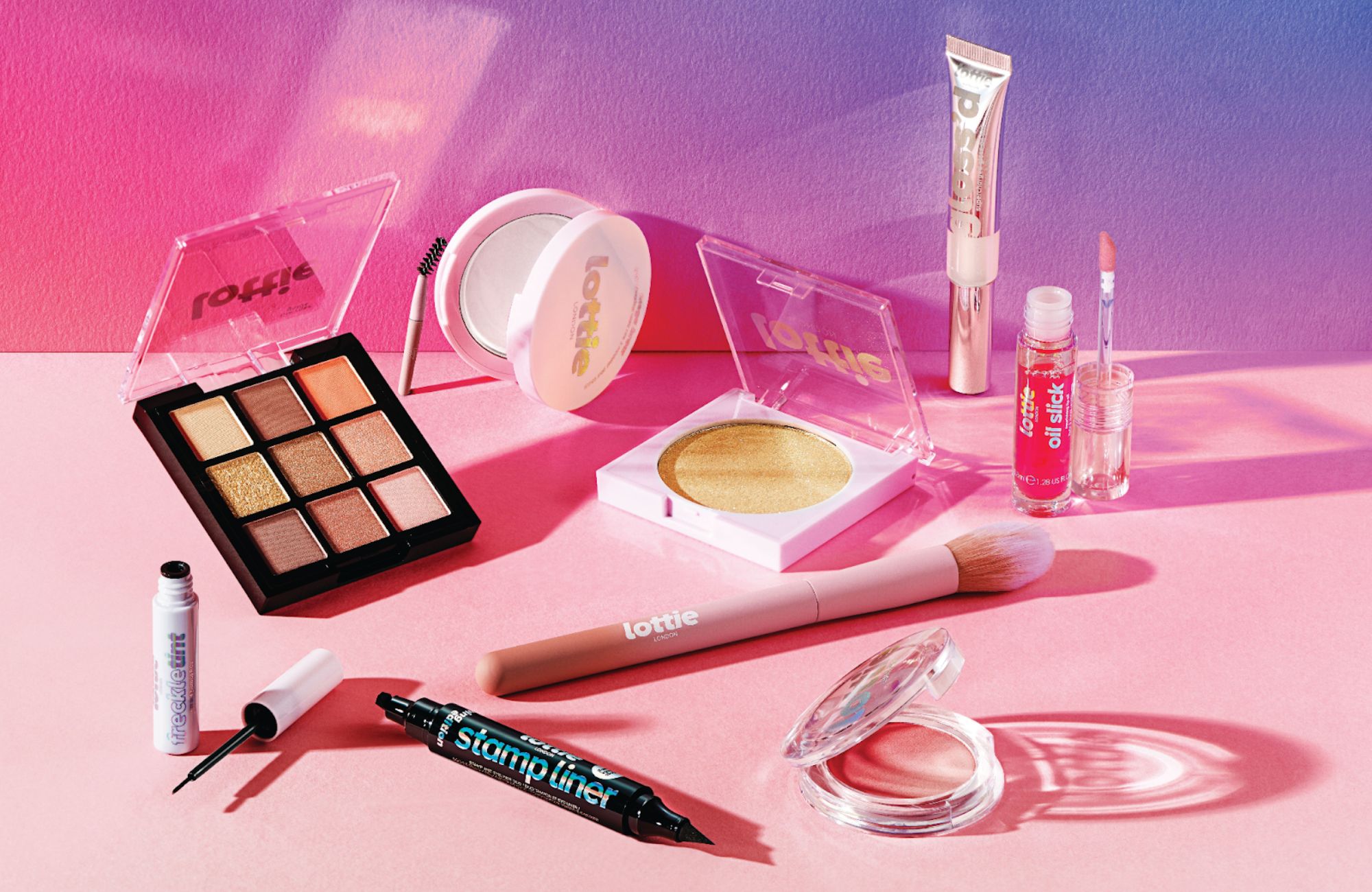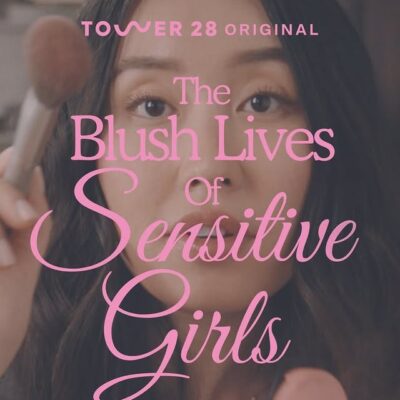
Serial Entrepreneur Charlotte Knight On Growing 3 Brands At Once And The Challenges Of Targeting Gen Z
Editorial nail technician-turned-beauty entrepreneur Charlotte Knight knows a thing or two about building brands. She’s the mastermind behind three rapidly growing ones: Ciaté London, Skin Proud and Lottie London.
The latter has enlarged its American distribution by entering 131 CVS doors and the pharmacy chain’s website. Selling everything from color cosmetics to nail polishes, the brand has been sold at Walmart since May 2021.
Lottie London’s CVS selection features several products that have gone viral on TikTok, including Superfake Mascara, Stamp Liner Wing Edition, Freckle Tint and Diamond Bounce, along with bestsellers Oil Slick and Sweet Lips, and the newly launched Cheeky Glow, Bubble Tea Primer, Stay Matte AF and pH Cream Blush.
Knight hints that the CVS launch will enable Lottie London to bring exclusive and limited-edition products to shoppers in the U.S. hungry for brands disrupting the beauty scene. She says, “CVS is a great new retailer partner for Lottie London’s U.S. expansion because they are expanding their portfolio of brands and are dedicated to championing indie and gen Z beauty brands.”
Knight also lauds CVS’s Beauty Mark initiative, which uses a watermark on its digital beauty imagery to communicate that it hasn’t been materially altered. She says, “This commitment aligns with our Lottie London brand ethos of inclusion and self-expression and our community and gen Z’s values.”
London-based Knight started Ciaté London, the first of her three brands, as a nail polish and nail art brand in 2009. By 2015, she pivoted its business away from the nail formulations it was known for when the nail market took a turn for the worse. “You go from being top of your industry to suddenly like this could kill us,” recalls Knight.
It didn’t kill Ciaté London. Instead, the pivot helped it become well-known for strong performing makeup products such as Wonderwand Mascara, Everday Vacay Coconut Setting Spray and Watermelon Burst Setting Spray. The brand is available at Sephora and Mecca.
Most recently, Knight introduced the affordable skincare brand Skin Proud in 2020, which has since extended into haircare and body care. Below, Knight discusses how she runs three brands, the challenges of targeting gen Z consumers and her future business goals.
You have three brands. How do you keep your focus?
In a disciplined fashion. It’s very important that we keep each brand within their own lane, and we are very clear on the DNA of each brand and where each brand is going and what is important to each of the brand’s consumer groups. We are clear on that internally, and it helps us to stay focused and disciplined on where we take the brand.
The teams are the ones that ultimately take that on, and then expand upon it and build that out. So, I don’t necessarily find myself having to jump throughout the day thinking about the different brands. I’m looking at everything from much the bigger picture.
We don’t mix a lot of sessions. We have dedicated people working on each specific brand. Our leadership team obviously has to wear all hats, but because they’ve got specific people on their teams who, especially around NPD and marketing, are laser-focused on that brand.
When you started Ciaté London, it only had nail polish. Now, the majority of its sales come from makeup. What was the transition like?
The nail category fell off the side of the cliff. Back in 2014, nail had been having these unbelievable growths. It was incredible. We were really, really creating a stir in the industry. We were being dubbed the nail innovators of the time and taking share because we were doing things never seen before. Then, the nail market just started reducing really quickly.
We went from walking into meetings with retailers literally wanting to take everything that we had and huge quantities to suddenly being like, “Nail is actually really underperforming for us, we’re going to be shrinking the space.” At that point, we existed in one category, in one channel, and it was really frightening because we were like, “How are we going to navigate this?” We really had a good look at ourselves and nailed down what are we known for. Is it just nail? Or is it innovation, color and pigment and texture?
We knew that we had access to the best manufacturers in the world. A lot of my team worked with those manufacturers in their previous careers, and we just said, “You know what, let’s actually launch some color, but do it in the way that we know best, which is innovation, never-been-seen formulations, let’s be really adventurous around texture.” That’s how color was born. Nail today is 5% of our business, which is incredible.

Why do you play in a variety of categories with your brands?
Having gone through that year of pain through 2014 and 2015, I just decided that I wanted a fully diversified business model. While that comes with its own strains and its own risks, to me having this super balanced portfolio of beauty and wellness brands across all channels, all demographics, all price points and many categories, we can really overcome any kind of headwinds, economic downturns, category shifts that we are going to see. Every business sees it. I definitely think it’s helped us hugely as we’ve grown.
Your brands have worked with Disney, Gossip Girl and “Selling Sunset” star Christine Quinn, among others, on collaborations. How dependent are the brands on celebrity and influencer collaborations?
We’ve been very fortunate, thank goodness, that we haven’t had any issues. We haven’t collaborated with too many real people because real people can create a lot of controversy. We’ve been very mindful of who we choose to collaborate with. Christine Quinn was probably the most controversial in terms of where we could have faced some issues. With her, she’s either loved or she’s despised, and we felt that a little bit. I definitely think that created a bit of negativity for us.
We did a collaboration with Iris Apfel, and that was just incredible. She’s just the most iconic person ever. We hedged our bets that there wasn’t going to be any controversy that was going to come out about Iris. But mostly we do it with just IP. We did Jessica Rabbit, which was my favorite collab, we’ve ever done. [Other collaborators have been] Miss Piggy [and] the yellow Smiley [face].
We’re not reliant on collabs. We’ll do it if it makes sense for us, but we’re not about just slapping a name on a palette and throwing it out there. It has to have a much deeper meaning, something that we can actually build a campaign around. When we did the Smiley collab, for example, we launched it as COVID took a grip on the Western world.
We decided, OK, what do we do? We’re about to launch a makeup collection. Nobody cares about lipstick and eyeshadow right now. So, it’s just going to be about making people feel good, giving them a reason to smile. I think we got the biggest reach and awareness from that campaign that we’ve ever had because it was just so real. It was so authentic. It’s exactly what people wanted. We gave the iconic Smiley lashes and lipstick, and blew up this 25-meter projection on the side of Westminster Abbey, Brooklyn Bridge and St. Thomas’ Hospital, which is one of the most famous hospitals in London.
These collabs are super gen Z-centric, but then how can we attach some social cause to that and actually make it a much bigger thing where people actually are educated, they learn, they embrace it? I think that helps to build community and brand loyalty. We love doing them because they’re super fun, but they can be a pain because you have to involve a third party or more.
A lot of your brands focus on gen Z. What are the challenges of being in the gen Z space?
It’s not knowing if they stand up to what they say, the reality versus their commitment. Where we’ve seen that is where we’ve tried to put super sustainable product out, specifically the Lottie nail polishes, 98% natural, everything’s recyclable or recycled. We’re not quite sure if the gen Z consumer really cares about that in the end or is she actually just wanting the hottest color at the best price point.
Many gen Zs do Shein hauls and still spend a lot of money on this fast fashion, even though we are being educated just how bad these things are to the environment and possibly things are not being done very ethically. It can be really challenging to build out a product strategy because you think that you’re doing what she wants.
Building brand loyalty with a gen Z is certainly much harder than it is with an older consumer. They also want a lot—and rightly so—but they do demand a lot. They want the best possible performance, best possible product ingredients. They want the transparency around the product ingredients. They want to pay the lowest possible price. They want it delivered free and not be charged for the return. If there’s a return, they want exceptional customer service.
There’s no compromise. So, definitely with the way the world is and rising costs and inflationary pressures and everything else, it is a challenge. It certainly tests us to make sure that we put out the best quality product at the lowest possible price as much as we can.

What’s your goal for your brands? Do you want to them to be acquired by a strategic?
I don’t know really. I mean there are multiple opportunities for us. If there’s an opportunity for us to merge with another platform, an operator who’s doing similar things to us so you’re effectively utilizing their resources and infrastructure and vice versa, that could be a great opportunity for us, especially if it was one that was in a different geography to us. Maybe one day we will take one or two of the brands, whenever we feel like a brand has achieved the required scale, to market at the right time.
You would be open to peeling off one or two of the brands?
I’m open to what we do in the future. If you are building a business with one kind of exit plan in place, with today’s economy and challenges in the M&A world, that would maybe be restrictive. For us, it’s about being open-minded, and when we get to that stage, just seeing what opportunities are there for us.
I can’t actually imagine selling everything and not doing what we do because we still have other brands that we are conceptualizing, and there’s so much that we want to still achieve. But when a brand has reached a certain scale, it would be a natural thing for that brand to move on to the acquirer who can then take it to the next level because there’ll be a limitation, I’m sure, of how far we could take one of the brands, and it would naturally need to go to that level.





Leave a Reply
You must be logged in to post a comment.